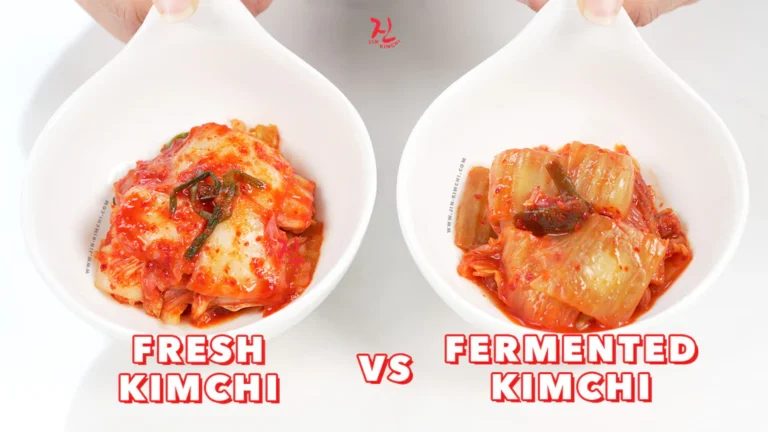The Triple Threat: Navigating the Nutritional Symphony of Zinc, Calcium, and Iron Without Blocking Absorption
A Prologue: The Silent Saboteurs and the Quest for Harmony
Imagine your body as a magnificent, intricate orchestra, constantly performing a symphony of life. Every nutrient, every mineral, is a musician, playing a vital role. But what happens when three of your most crucial players – Zinc, Calcium, and Iron – start vying for the same spotlight, or worse, inadvertently mute each other’s performance? This isn’t a rare occurrence; it’s a daily drama unfolding within your digestive tract, a silent struggle that can undermine even the most diligent efforts at healthy eating and supplementation.
We are about to embark on a quest, not for a mythical elixir, but for practical wisdom. Our mission: to understand the profound individual importance of Zinc, Calcium, and Iron, to uncover the insidious ways they can obstruct each other’s absorption, and most crucially, to devise masterful strategies to ensure each of these vital minerals gets its moment to shine, contributing fully to your body’s grand, ongoing symphony. This isn’t just about taking supplements; it’s about understanding the delicate dance of biochemistry, mastering the art of nutritional timing, and transforming your approach to wellness into a truly harmonious experience. For the knowledgeable seeker of optimal health, this is your guide to becoming the master conductor of your own internal orchestra.
>
Part I: The Soloists – Unveiling the Power of Zinc, Calcium, and Iron
Before we delve into the intricate web of their interactions, let’s truly appreciate the individual genius of our three protagonists. Each plays an indispensable role, a distinct melody in the symphony of life.
1. Zinc: The Architect of Cellular Harmony
Zinc, often overshadowed by its more celebrated counterparts, is a true workhorse, a microscopic architect responsible for building and maintaining countless bodily structures and functions. It’s a trace mineral, meaning we only need small amounts, but its impact is anything but small.
Its Virtuosity:
- Immune System Maestro: Zinc is absolutely critical for the proper functioning of your immune system. It plays a role in the development and function of immune cells, helping them identify and fight off invaders. A deficiency can leave you vulnerable to infections, prolong healing times, and dampen your body’s defensive capabilities.
- Enzymatic Catalyst: Over 300 enzymes in your body rely on zinc to perform their functions. These enzymes are the tiny machines that drive essential metabolic processes, from DNA synthesis and cell division to wound healing and protein metabolism. Without zinc, these crucial reactions grind to a halt.
- Sensory Perception: Ever wonder why food tastes bland or smells muted when you’re sick? Zinc is vital for the proper function of taste and smell receptors. It’s a key component in a protein called gustin, which is involved in taste bud development.
- Skin Health & Wound Healing: Zinc promotes healthy skin, helps regulate oil production, and accelerates wound healing by aiding in cell regeneration and collagen formation.
- Hormonal Balance: It plays a role in hormone production and regulation, including insulin and thyroid hormones, and is particularly important for male reproductive health, impacting testosterone levels and sperm quality.
- Antioxidant Defense: Zinc is a component of superoxide dismutase (SOD), a powerful antioxidant enzyme that helps protect cells from damage caused by free radicals.
The Whisper of Deficiency:
Even mild zinc deficiency can manifest in a surprising array of symptoms: impaired immune function, frequent infections, hair loss, skin rashes, poor wound healing, loss of taste or smell, diarrhea, and in children, growth retardation.
Where Zinc Sings:
Rich sources include oysters (a true zinc powerhouse), red meat, poultry, beans, nuts (especially cashews and almonds), whole grains, and dairy products.
2. Calcium: The Unyielding Builder and Messenger
Calcium is not just about strong bones and teeth; it’s a dynamic mineral involved in an astonishing range of physiological processes, acting as both a structural foundation and a vital messenger.
Its Virtuosity:
- Skeletal Architect: This is its most famous role, and for good reason. 99% of the body’s calcium is stored in bones and teeth, providing structural rigidity and acting as a vast mineral reservoir. It’s constantly being deposited and withdrawn, a dynamic process that keeps your skeleton strong and resilient.
- Muscle Contraction: Calcium ions are the spark that initiates muscle contraction. Without sufficient calcium, your muscles – including your heart – simply cannot function.
- Nerve Transmission: It plays a critical role in the transmission of nerve impulses, facilitating communication between your brain and the rest of your body.
- Blood Clotting: Calcium is an essential cofactor in the complex cascade of events that leads to blood clotting, preventing excessive bleeding.
- Hormone Secretion: It’s involved in the release of various hormones and enzymes, impacting digestion, metabolism, and endocrine function.
- Cell Signaling: Calcium acts as a universal intracellular messenger, regulating a multitude of cellular processes, from gene expression to cell growth.
The Whisper of Deficiency:
Chronic calcium deficiency can lead to osteoporosis (brittle bones), increased risk of fractures, muscle cramps, numbness and tingling in the extremities, and in severe cases, heart rhythm abnormalities.
Where Calcium Sings:
Dairy products (milk, yogurt, cheese) are classic sources, but calcium is also abundant in leafy green vegetables (kale, collard greens), fortified plant milks and juices, tofu, sardines, and fortified cereals.
3. Iron: The Energizer and Oxygen Carrier
Iron is the lifeblood of our cells, quite literally. It’s the mineral that fuels our energy, transports oxygen, and ensures every cell in our body can breathe and thrive.
Its Virtuosity:
- Oxygen Transport (Hemoglobin): Iron is the central component of hemoglobin, the protein in red blood cells responsible for binding to oxygen in the lungs and transporting it to every tissue and organ in the body. Without iron, cells suffocate.
- Cellular Respiration (Myoglobin & Enzymes): Beyond hemoglobin, iron is also found in myoglobin (which carries oxygen in muscle cells) and is a critical component of numerous enzymes involved in cellular respiration, the process that generates energy (ATP) from food.
- Energy Production: By enabling oxygen transport and supporting enzyme function, iron is fundamental to your body’s energy production. A lack of iron means a lack of energy.
- Immune Function: Iron supports the proliferation and maturation of immune cells, helping them effectively combat pathogens.
- Cognitive Function: Adequate iron levels are crucial for brain development and function, impacting concentration, memory, and learning.
- DNA Synthesis: It plays a role in DNA synthesis and cell division, essential for growth and repair.
The Whisper of Deficiency:
Iron deficiency anemia is the most common nutritional deficiency worldwide. Symptoms include profound fatigue, weakness, pale skin, shortness of breath, dizziness, cold hands and feet, brittle nails, and poor concentration.
Where Iron Sings:
There are two main types of dietary iron:
- Heme Iron: Found in animal products like red meat, poultry, and fish. It’s highly bioavailable and easily absorbed.
- Non-Heme Iron: Found in plant-based foods such as beans, lentils, spinach, fortified cereals, and dark chocolate. Its absorption is more variable and influenced by other dietary factors.
>
Part II: The Clash of Titans – Unmasking the Absorption Blockers
Now that we understand the individual brilliance of Zinc, Calcium, and Iron, it’s time to reveal the core challenge: their tendency to interfere with each other’s absorption. This isn’t malicious; it’s a consequence of shared pathways, competitive binding sites, and the complex biochemistry of our digestive system. Think of it as three star performers all needing to use the same microphone at the same time.
The digestive tract, particularly the small intestine, is a bustling hub where nutrients are absorbed into the bloodstream. Many minerals, including our "Triple Threat," rely on specific transport proteins or shared absorption pathways to cross the intestinal barrier. When multiple minerals compete for these limited "gatekeepers," absorption rates can plummet.
1. Calcium vs. Iron: The Most Famous Rivalry
This is perhaps the most well-documented and significant interaction. Calcium, particularly in larger doses, is known to inhibit the absorption of both heme and non-heme iron.
- The Mechanism: While the exact mechanism is still debated, it’s thought that calcium can compete with iron for shared transport proteins in the intestinal cells (enterocytes). Some theories suggest it may also alter the pH in the small intestine, making iron less soluble and harder to absorb, or that it forms insoluble complexes with iron, preventing its uptake.
- The Impact: Studies have shown that even moderate amounts of calcium (e.g., from dairy products or supplements) consumed simultaneously with iron can significantly reduce iron absorption – sometimes by as much as 50-60%. This is particularly concerning for individuals at risk of iron deficiency, such as pregnant women, young children, and menstruating women.
2. Calcium vs. Zinc: A Quiet Competition
Less publicized than its clash with iron, calcium can also inhibit zinc absorption, especially when consumed in high doses.
- The Mechanism: Similar to iron, calcium and zinc can compete for common binding sites and transport pathways in the small intestine. High levels of one can effectively "crowd out" the other.
- The Impact: While less dramatic than the calcium-iron interaction, chronic co-ingestion of high-dose calcium supplements with zinc can lead to reduced zinc status over time. This is especially relevant for individuals relying on supplements for their zinc intake.
3. Iron vs. Zinc: A Sibling Rivalry
Iron and zinc, both essential trace minerals, also share a competitive relationship for absorption, primarily due to their reliance on similar transport proteins.
- The Mechanism: Divalent metal transporter 1 (DMT1) is a key protein responsible for transporting both non-heme iron and zinc (among other metals) across the intestinal cell membrane. When either iron or zinc is present in high concentrations, it can saturate these transporters, leaving fewer available for the other.
- The Impact: High doses of iron supplements (especially ferrous sulfate) have been shown to inhibit zinc absorption, and vice versa. This is a crucial consideration for those taking individual supplements for both minerals, particularly if they are already borderline deficient in one or both.
4. The Common Enemies: Phytates, Oxalates, and Tannins
Beyond the direct mineral-on-mineral clashes, there are other "silent saboteurs" present in many healthy foods that can bind to our Triple Threat, forming insoluble compounds that are poorly absorbed.
- Phytates (Phytic Acid): Found abundantly in whole grains, legumes, nuts, and seeds. Phytates bind to zinc, iron, and to a lesser extent, calcium, forming phytate-mineral complexes that are largely indigestible. This is a significant concern in plant-based diets.
- Oxalates (Oxalic Acid): Present in leafy greens (like spinach, rhubarb, beet greens), cocoa, and tea. Oxalates primarily bind to calcium and iron, forming insoluble crystals that prevent their absorption. While spinach is a good source of calcium, much of it is bound by oxalates, reducing its bioavailability.
- Tannins: Found in tea (especially black tea), coffee, cocoa, and some wines and legumes. Tannins can significantly inhibit the absorption of non-heme iron by forming insoluble complexes. This is why it’s often advised to avoid drinking tea or coffee with iron-rich meals.
5. Other Disruptors: Medications and Gut Health
- Medications: Proton pump inhibitors (PPIs) and other antacids, commonly used for heartburn, reduce stomach acid, which is crucial for the conversion of dietary iron into an absorbable form (ferrous iron). They can also impact zinc and calcium absorption. Certain antibiotics, diuretics, and corticosteroids can also interfere with mineral status.
- Gut Health: A compromised gut microbiome, inflammation (e.g., from Crohn’s disease or celiac disease), or malabsorption syndromes can drastically reduce the ability to absorb all three minerals, regardless of dietary intake or supplementation strategy.
>
Part III: The Master Conductor – Strategies for Harmonious Absorption
Understanding the conflicts is the first step; the next is to become the master conductor, orchestrating a diet and supplementation routine that minimizes interference and maximizes absorption. This requires strategic timing, intelligent food choices, and a holistic approach to wellness.
1. The Golden Rule: Strategic Timing is Everything
This is arguably the single most powerful tool in your arsenal against mineral malabsorption.
-
Separate Calcium from Iron and Zinc: This is paramount.
- Calcium Supplements: If you take a calcium supplement, take it at a different meal or time of day than your iron or zinc supplements. For example, take calcium with breakfast or dinner, and iron/zinc with lunch or a separate snack.
- Dairy Products: Be mindful of consuming large amounts of dairy with iron-rich meals. If you’re having a steak (iron-rich), perhaps skip the glass of milk or save your yogurt for a different snack.
- Multivitamins: If your multivitamin contains significant amounts of calcium alongside iron and zinc, its effectiveness for iron and zinc might be compromised. Consider a multivitamin with lower calcium or take individual supplements strategically.
-
Separate Iron from Zinc (If taking high doses): If you’re taking separate, high-dose iron and zinc supplements (e.g., more than 25mg of zinc or 45mg of iron), it’s prudent to take them at different times of the day. If they are in a balanced multivitamin with moderate doses, the competition might be less severe.
A Sample Timing Schedule (Illustrative):
- Morning (with breakfast, not coffee): Zinc (e.g., 15-30mg) + Vitamin C (enhances zinc & iron absorption).
- Lunch (with a meal): Iron (e.g., 18-45mg) + Vitamin C. (Ensure this meal is low in calcium-rich foods like dairy).
- Evening (with dinner or before bed): Calcium (e.g., 500mg) + Vitamin D (enhances calcium absorption). Magnesium is also often paired with calcium here.
Note: This is a general guide. Individual needs and medical advice should always take precedence.
2. Food First: The Foundation of Absorption
Supplements are valuable, but the natural synergy found in whole foods is irreplaceable.
- Pair Iron with Vitamin C: Vitamin C is a powerful enhancer of non-heme iron absorption. Always combine plant-based iron sources (beans, lentils, spinach) with foods rich in Vitamin C (citrus fruits, bell peppers, berries, broccoli). The ascorbic acid helps convert non-heme iron into a more absorbable form.
- Cook in Cast Iron: Cooking in cast iron skillets can subtly increase the iron content of your food, especially acidic foods like tomato sauce.
- Soak, Sprout, Ferment: These traditional food preparation methods are champions against phytates.
- Soaking: Soaking legumes, grains, and nuts overnight before cooking or consumption can significantly reduce phytate content.
- Sprouting: Sprouting grains and legumes activates enzymes (phytase) that break down phytic acid, making minerals more available.
- Fermentation: Sourdough bread (compared to yeast-leavened bread) has lower phytate levels due to the fermentation process. Fermented foods like kimchi and sauerkraut also enhance overall gut health, indirectly supporting absorption.
- Choose Lower-Oxalate Greens: While spinach is nutrient-dense, its high oxalate content makes its calcium less bioavailable. Opt for lower-oxalate greens like kale, collard greens, bok choy, and broccoli as primary calcium sources.
- Moderate Tannin-Rich Beverages: Avoid drinking tea or coffee with iron-rich meals or supplements. If you enjoy these beverages, consume them at least an hour before or after your iron intake.
3. Intelligent Supplementation: Form Matters
When choosing supplements, the form of the mineral can significantly impact its absorption and potential for interaction.
- Iron Forms:
- Ferrous Bisglycinate: Often recommended due to its high bioavailability and gentler impact on the digestive system compared to traditional ferrous sulfate. It’s also less likely to be inhibited by phytates and other compounds.
- Heme Iron Polypeptide (HIP): A supplement derived from animal sources, offering highly bioavailable heme iron, which is less affected by dietary inhibitors.
- Zinc Forms:
- Zinc Picolinate, Zinc Citrate, Zinc Gluconate, Zinc Methionine: These chelated forms are generally well-absorbed. Zinc oxide and zinc sulfate are less bioavailable and more likely to cause stomach upset.
- Calcium Forms:
- Calcium Citrate: Well-absorbed, even without stomach acid, and can be taken with or without food.
- Calcium Carbonate: More concentrated but requires stomach acid for absorption, so it’s best taken with food. It’s also more likely to cause constipation.
- Avoid Dolomite, Bone Meal, or Oyster Shell: These may contain lead or other heavy metals.
4. The Supporting Ensemble: Synergistic Nutrients
Many other nutrients act as facilitators, helping our Triple Threat perform optimally.
- Vitamin D: Absolutely essential for calcium absorption in the gut. Without adequate Vitamin D, calcium cannot be utilized effectively. It also plays a role in bone mineralization.
- Magnesium: Works in tandem with calcium in bone health, muscle function, and nerve transmission. A healthy balance of calcium and magnesium is crucial.
- Copper: An often-overlooked trace mineral that is essential for iron metabolism. It helps mobilize iron from storage and integrate it into hemoglobin. Excessive zinc intake, however, can interfere with copper absorption, creating another potential imbalance to watch for.
- B Vitamins: Especially B12 and Folate, are crucial for red blood cell formation, working alongside iron.
- Stomach Acid (Hydrochloric Acid): As mentioned, sufficient stomach acid is vital for dissolving minerals and converting them into absorbable forms. If you experience low stomach acid, this could be a hidden barrier to absorption.
5. Holistic Harmony: Beyond Diet and Supplements
Optimal mineral absorption isn’t just about what you eat; it’s about the overall health of your body.
- Gut Health: A healthy gut microbiome, free from inflammation and dysbiosis, is paramount for nutrient absorption. Probiotic-rich foods and addressing underlying gut issues can significantly improve your body’s ability to take up minerals.
- Stress Management: Chronic stress can negatively impact digestion and nutrient absorption.
- Hydration: Water is the medium for all biochemical processes, including digestion and absorption.
- Regular Exercise: Supports bone density (calcium), improves circulation (iron), and generally enhances metabolic health.
>
Part IV: Crafting Your Personal Symphony – Practical Application
The journey to harmonious mineral absorption is deeply personal. There’s no one-size-fits-all solution, but by applying the principles we’ve discussed, you can design a strategy that works for you.
1. Assess Your Needs
- Dietary Analysis: Are you vegan/vegetarian? Pregnant? An athlete? These factors significantly influence your mineral requirements.
- Symptoms: Are you experiencing unexplained fatigue (iron?), frequent colds (zinc?), or muscle cramps (calcium/magnesium?)
- Blood Tests: Work with a healthcare professional to get blood tests for iron (ferritin, serum iron, TIBC), zinc, and calcium levels. This provides objective data on your current status.
- Identify Risk Factors: Are you taking medications that interfere with absorption? Do you have a history of digestive issues?
2. Prioritize Food First
Before reaching for supplements, optimize your dietary intake.
- Balanced Meals: Aim for meals that include a variety of nutrient-dense foods.
- Mindful Combinations:
- Breakfast: Oatmeal (phytates, so soak/sprout oats if possible) with berries (Vit C) for iron. Later, a calcium-rich smoothie.
- Lunch: Lentil soup (iron/zinc) with a side salad of bell peppers (Vit C).
- Dinner: Lean meat (heme iron, zinc) with steamed broccoli (Vit C, calcium). Dairy or calcium supplement later.
- Strategic Snacking: Use snacks as opportunities to get minerals without interference. A handful of almonds (zinc, calcium, magnesium) in the afternoon, separate from iron-rich meals.
3. Thoughtful Supplementation
- Individual Supplements vs. Multivitamins: For specific deficiencies, individual supplements allow for precise dosing and timing. If using a multivitamin, choose one that considers these interactions (e.g., lower calcium, or chelated forms).
- Dosage: Adhere to recommended daily allowances (RDAs) or doses prescribed by a healthcare professional. High doses of one mineral can easily create deficiencies in others.
- Consistency: Mineral absorption is a continuous process. Regular, consistent intake is more effective than sporadic mega-doses.
- Listen to Your Body: Pay attention to how you feel. Digestive upset, changes in energy, or new symptoms could indicate an imbalance.
4. Consult a Professional
Navigating the complexities of mineral interactions is challenging. A registered dietitian, nutritionist, or doctor knowledgeable in functional medicine can:
- Help you interpret blood tests.
- Tailor a personalized dietary plan.
- Recommend appropriate supplement forms and dosages.
- Identify and address underlying health issues that might be impacting absorption.
>
Epilogue: The Symphony Continues
We began this journey by imagining your body as an orchestra, and our three protagonists – Zinc, Calcium, and Iron – as its star soloists. We’ve explored their individual brilliance, uncovered the potential for discord, and, most importantly, learned the art of becoming the master conductor.
The pursuit of optimal health is not a passive endeavor; it’s an active, informed process of understanding your body’s intricate needs and responding with wisdom and intention. By embracing strategic timing, prioritizing whole foods, choosing intelligent supplements, and nurturing your overall well-being, you move beyond simply consuming nutrients. You begin to orchestrate them, ensuring each vital mineral plays its part, contributing to a vibrant, robust, and harmonious symphony of life.
This knowledge empowers you. It transforms you from a mere audience member to an active participant, a nutritional detective, and ultimately, the architect of your own enduring health and vitality. The stage is set, the musicians are ready. Let the symphony of your well-being play on, in perfect, unblocked harmony.







